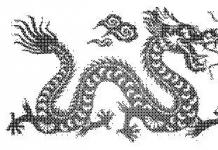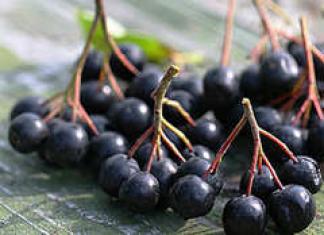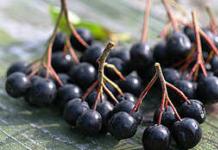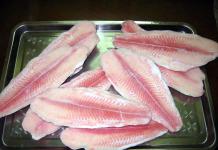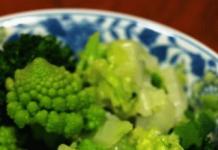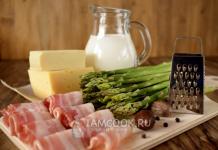When choosing what to glue materials with, you need to approach this issue with all responsibility. Fabric glue must meet certain parameters, otherwise a high-quality connection will not work.
Features of using various compositions
The strength and quality of the fabric connection largely depends on the glue used. There are several types of compositions that have their own characteristics and are suitable for gluing different materials:
- polyvinyl acetate glue, or PVA for short, is universal, inexpensive, it can be used to glue paper, fabrics, tiles, foam, and used for decoupage; modern types are resistant to moisture;
- rubber - characterized by elasticity, suitable for textiles, leather, wood, glass, rubber, one of its types is latex glue;
- based on polyurethane - perfectly glues PVC, wood, glass, plastic, tiles;
- for decoupage;
- polyvinyl chloride glue, or PVC - reliably and firmly connects the corresponding surfaces;
- based on neoprene - characterized by high strength, resistant to high temperatures, used for gluing textiles, leather, rubber, wood;
- hot melt adhesive - resistant to alkali and acids, almost odorless, glues wood, plastic, ceramics, textiles, the surface must be degreased before use;
- perchlorovinyl - used in shoe production for gluing leather, textiles, rubber;
- on a styrene-butadiene base - it is elastic, resistant to sunlight, high and low temperatures, moisture, hardens quickly, suitable for leather and felt;
- nitrocellulose - provides excellent bonding of textiles to leather, therefore it is often used in the production of shoes.
All varieties differ in composition, which provides their basic properties.

Different types of adhesive materials differ from each other not only in characteristics and properties, but also in the technique of use.
The most popular and relevant are:
- Rubber-based adhesive. Lubricate the surfaces to be glued and let dry. After approximately 60 minutes, moisten the formed film with acetone and connect the surfaces. Place a weight on the gluing area.
- Perchlorovinyl composition. Apply the first layer of glue and let dry for 10 minutes, then spread the second layer and leave to dry for 3 minutes. Roll out the seam formed after gluing with a roller and place it under a load for 48 hours.
- Liquid thread (transparent fabric glue). Apply the compound evenly in a thin layer to the areas to be glued, wait a few seconds, then press the surfaces together as firmly as possible.
- Nitrocellulose glue. Spread the mixture and immediately connect, then place under the weight.
- Polyvinyl acetate glue. Apply the product to both surfaces and after a few minutes press them together. Place the glued area under the weight.
How to choose
A properly selected adhesive composition for fabric will allow you to avoid complications when working with it, while the connection will be strong and of high quality. Transparent fabric glue has received the most positive reviews " liquid thread" It perfectly connects various types of fabric, even coconut and felt fibers, and is successfully used for making appliqués and repairing holes in jeans, trousers and other clothing.

To glue synthetic materials, it is better to use “ Oak", is a universal waterproof adhesive.
Universal adhesive resistant to washing, wear and ironing " Second", it dries instantly, so gluing the fabrics must occur very quickly. The composition is perfect for eliminating damage to leather items, shoes, clothing, gluing porcelain products, foam rubber. The line includes options with specific properties that will help eliminate even severe damage; their cost is higher, but they are also very effective.

When gluing fabrics, instant glue or PVA. The quality of work will be at the highest level if you use a professional composition, which has several advantages over other products:
- transparent;
- does not leave stains;
- has no smell;
- does not spread;
- It is resistant to washing with aggressive detergents.
All of the above properties are especially important when making crafts, for example, appliqués and decoupage.

Main criteria for choosing adhesive:
- heat resistance and water resistance, since the gluing area must withstand numerous washings and ironing;
- the formation of an elastic film that ensures a reliable connection - even if the material is stretched, the glued parts are firmly fixed;
- a long drying period, allowing you to correct parts and do the work as accurately as possible;
- versatility, easy bonding of wool, cotton, synthetics, artificial materials.
Brands and cost
Textile glue can be purchased for 60-80 rubles; it is better to make such a purchase in a specialized store, this will serve as a guarantee that the composition is not a fake.

Make a quality one decoupage on fabric you can use glue from manufacturers JAVANA, Mod Podge Fabric or . The products can withstand hand washing with liquid detergents perfectly.
Price JAVANA- approximately 220 rubles for 150 ml. Provides high-quality adhesion with a matte finish, secured by ironing the fabric from the wrong side with a hot iron (Cotton mode) for 5 minutes. Recommended for working with napkins, it has an optimal consistency (quite liquid), the napkin fits well on the fabric, without forming folds or wrinkles, and is almost invisible on the fabric.

Price is approximately 90 rubles per 50 ml. The glue is thick, so it is used uneconomically; it cannot be diluted with water, since in this case the properties of the composition are lost.

Mod Podge You can do it yourself at home.

Instructions on how to make fabric glue with your own hands
Handmade glue Mod Podge is practically not inferior in its characteristics to the composition of industrial production. To prepare glue Mod Podge Ingredients needed:
- 250 ml PVA glue;
- 250 ml water.
Mix glue and water in a half-liter jar and shake well. The result is a composition that forms a matte surface.
Advice
If you want a glossy Mod Podge- simply add water-based acrylic varnish to the mixture, which will become transparent after drying.
It's easy enough to do it yourself dextrin glue for fabric. Pour the starch into an enamel container and place it in a drying cabinet for two hours, the temperature should be at least 160˚ C. The result is dextrin. Boil water and add dried starch to it. The proportions should be 1:1. Mix thoroughly - the dextrin should completely dissolve. The composition hardens quickly, so it must be used as soon as possible.

You can do it at home casein glue mixture, for which take 2 parts casein and 1 part water. Pour water into dry casein in a thin stream. Constantly stir the resulting adhesive mass, this will ensure its homogeneity. The mixture dries quickly and is then unsuitable for use. The main difficulty is the preparation of casein. It is obtained at home from milk or low-fat cottage cheese. It is much easier to buy powdered casein.

Advice from professionals will help you glue fabrics together or make decoupage as efficiently as possible:
- Clean the areas to be glued from threads and other objects that may impair the adhesion of surfaces.
- The main thing when working with glue is accuracy, since it will be almost impossible to correct flaws. To avoid trouble, protect the areas from possible drops of glue.
- Consider the specific use of clothing or products that will be glued. For example, only the most durable and strong composition is suitable for a robe. Light, delicate glue that does not change its color after hardening and does not leave stains is suitable for a summer sundress made of thin fabric.
- If the glue comes into contact with the skin, use compounds made exclusively from environmentally friendly ingredients. This will avoid allergies and irritations.
How to connect pieces of fabric together? Sew - many of you will answer. But sometimes these materials have to be glued together. Most often, this method is used by needlewomen who make a variety of hand-made products: toys, hair accessories, jewelry. But even in everyday life, sometimes it happens that you need to glue fabrics. For example, if a small hole appears on your clothes. It is not always convenient to sew on a small patch. But if you glue it, the place of “repair” will be almost invisible. How to glue fabric to fabric is the topic of our article. We will tell you what materials can be used to fasten textiles together.
Glue for decoupage
In craft stores you can find a tool for making textile appliqué. It can be used to glue different ones together. This glue is good because it does not set immediately after application. You will have a few minutes after application to calmly lay the parts on top of each other, align and move them if necessary. After drying, no stains or streaks from this material will be visible on the product. The question before you is: “What kind of glue is best for gluing fabric?” The answer is simple - decoupage.
Rubber glue
When thinking about what fabric to use, think about rubber-based bonding material. It is applied to both textile parts. Then they are carefully placed on top of each other and left to dry for about an hour. After this time, the gluing area is moistened with acetone, and the fabric is placed under a load for several minutes. It is advisable to leave the product that has undergone this treatment for another ten hours to “adhere”.

How to glue fabric to fabric? Textile aerosol to help you
This type of adhesive material is applied from a distance of 30 centimeters to the surface of the fabric. Immediately place the part that needs to be attached onto it. Place a flat, heavy object on top and leave the product to dry. This glue belongs to the category of “temporary fixation”, so it should not be used where pieces of textile need to be firmly connected. But for making appliqués and silk-screen printing, this material is simply ideal.
Adhesive tape
“Gossamer” braid is the name given to this material for fastening textiles and other products. It is sold in fabric and accessories stores. Before gluing fabric to fabric, you should prepare the materials. Turn on the iron, while it is heating up, lay a dry web tape between the pieces of textile that need to be connected to each other. Now iron the product on top. Turn it over and iron it on the other side. When heated, the glue melts and holds the parts together. It is important to know that before fastening thin textiles (silk, satin, chiffon) or natural wool, you need to cover them with gauze on top. This is necessary in order not to burn the fabric.
Dear readers! Help me with advice! (Again.)
Task:
There is an ordinary T-shirt (CB) and there is this “golden” material. It is elastic and covered with some kind of glossy layer. And pieces of this gold material need to be glued onto a T-shirt. *And ideally, you don’t have to do any additional sewing later to secure the edges).
What you see in the photo is a piece perfectly glued with double-sided interlining. This means a web that is located on a piece of paper. It is first smoothed to one side, then the paper is removed and smoothed onto the second fabric. all this is beautiful (this is how I want it to look!) but I know from experience about this thing that it will fall off over time. Even if it survives one careful wash, after the second or third it will begin to safely fall off at the edges.
Naturally, if there are no other options left, you will have to do it just like in the picture, plus somehow sew on the parts around the edges. To hold on. Zigzag and gold thread, probably. But this material is so viscous, somehow needles are so reluctant to stick into it, and in general. The seams on it don't look very good. I would really like to do without them.
As an option, they offer me glue, which is pure latex. I only glued latex with latex, so I don’t really know how it will behave in the wash. Although they write that once you glue it and dry it for 8 hours, you can then wash it up to 90 degrees, iron it, and do whatever you want, and nothing will ever fall off. I will, of course, wash my sample once (or a couple of times). But until I find out how it is in the long term, it needs to be worn for a long time, washed a lot. So I decided to ask - maybe someone has already tried this? And knows if it really lasts?
Our most popular pure latex textile adhesive is this one:
http://ber-fix.de/shop/ber-fix-textilkleber
The second option is PVA. I worked with it a lot, but I never tried to glue clothes specifically. I know that when it actually gets on the fabric and dries, the dried pieces become very hard. This is no longer very good (it must be pleasant to wear on the body). Although it is somehow harmless, and I know that it holds up well. However, it holds up well on bindings or some objects of art. What about fabric after 10 washes? Don't know.
I once asked something about glue a long time ago, and they advised me “Moment Crystal”. I bought it then and didn’t really like it. And later I also tried it on fabric. So - first of all, it smells bad for quite a long time. And secondly, the fabrics glued to it still fall off after a couple of washes. So don't offer it. :-)
To glue any material, not just fabric, you need to choose the glue wisely. Carefully read the instructions on the packaging, study the composition yourself, the main thing is to get a result that you are satisfied with its quality. There is no universal glue that would glue all types of fabrics in one minute.
Fabric adhesives are selected based on their effectiveness based on the following parameters:

Of course, there are adhesives that meet all parameters, they cost in direct proportion to quality - from 800 rubles per tube and above. Such adhesive compositions are sold in stores specialized in the sale of industrial chemicals, building materials, and in hunter's and fisherman's stores. There are more budget-friendly options that need to be adjusted to, as everyone has different strengths and even different application requirements. Depending on the type of fabric (each type of fabric must have a specific glue), there is appropriate adhesion (adhesion of surfaces held together with glue).
Properties of various adhesives
Transparent adhesives that do not change under the influence of high and low temperatures and do not degrade when exposed to sunlight are ideal for fabrics. Several types of such glue are known:
- Polyurethane based adhesive It is made on a synthetic basis, thanks to which it firmly glues surfaces. This glue is produced both elastic and hard. It is clear that an elastic version is made for gluing fabrics. Polyurethane adhesive is added to mixtures that increase adhesion or adhesion of surfaces, that is, it itself has this property to the fullest. This type of glue is highly resistant to temperature fluctuations: from -50 o to +120 o C.
- Polychloroprene based adhesive suitable for gluing various types of fabric, including soft materials with a spongy surface - foam rubber and padding polyester. Such glue is Kleiberit C135, which is applied to the surface using a glue gun. Chloroprene adhesives have the fastest setting.
- Neoprene based adhesive, its main differences are water resistance and reliability. Neoprene glue is used for gluing diving suits - this fact indicates high water-resistant qualities. This glue is used to glue rubber, fabrics and leather.
- Nitrocellulose mixture Designed for gluing leather and fabric, most often used in shoe production.
- Latex adhesives, formed on the basis of nitrile butadiene rubbers. These adhesive compositions contain about 20% casein (treated with borax), which ensures high elasticity of the adhesive. It is also distinguished by its high water-resistant qualities.
- for fabric, for example, rubber glue. It is suitable for gluing seams. Resistant to high and low temperatures, as well as sunlight.
- Adhesive based on natural rubber It is elastic and is used for gluing fabrics and leather. Does not interact with oxygen.
- Adhesive based on styrene butadiene rubber Mainly used in production for gluing dense materials: felt, leather. The glue is elastic and waterproof, its main drawback is that it hardens quickly.
- All types of rubber adhesives suitable for dense fabrics due to their elasticity, but they have their drawbacks - a long gluing process. Rubber-based adhesives are applied in a thin layer to the surface and left. After an hour, a film forms, which is lightly moistened with acetone and then the surfaces are pressed together, and a load is placed on top. The fabric must be left under load for at least 10 hours. An example of such glue is BisonTextile, priced at about 250 rubles. It not only glues surfaces well, but is also resistant to both ironing and washing. Aerosol rubber adhesives are also sold. They have the same advantages, but unlike conventional ones they are applied in the thinnest layer, so they dry quickly.
- Butyraphenol adhesives, for example, BF-6 glue. The strength of the bonded surface is no less than when bonded with a seam. The disadvantage is that it forms a yellowish seam.
- Perchlorovinyl glue used for fabrics and artificial leathers, where it has fairly high adhesion.
- Hot melt adhesives suitable for gluing various surfaces, including various types of fabrics. They are applied using glue guns, which ensures uniform application to the desired location. Usually, seamstresses glue rhinestones and small details onto hot glue. Hot melt adhesive is sold in the form of rods for a gun (about 900 rubles) or in the form of a powder for self-preparation (average price - 75 rubles). The main advantage of this glue is its speed of action, no more than a minute. It is safe, non-toxic.
- Polyurethane based adhesives, such as Super-NN (approximate price - 250 rubles) and Ur-600 (350 rubles). They are not afraid of moisture and temperature changes. Suitable for various types of fabric and leather. Hardens in 10-20 minutes.
- Polyvinyl chloride glue used for fabrics of different textures. It has high adhesion, but there is a drawback - to glue the fabric you need to keep it under pressure for at least six hours. This glue is produced in the form of an aerosol, which is very convenient to spray in an even layer. Glue is sprayed onto only one of the parts. And since the application layer is very thin, a second one is quickly attached, and under load for a couple of hours.
- Perchlorovinyl glue It holds surfaces well, but takes a very long time to dry. It must be applied in two stages: the first time, spread a thin layer on both surfaces and leave for 10 minutes. Then another layer is applied and allowed to dry for 3 minutes, then the surfaces are tightly fastened and a load is placed for two to three days.
Technology for gluing fabric surfaces
For all types of adhesives you need degreased surface. Before gluing items of clothing or pieces of fabric, you must ensure that material is clean: new or just washed. Thick fabrics, leather and those fabrics that cannot be washed, wipe with a cotton swab moistened with acetone or alcohol. You can use nail polish remover or glass cleaner, as well as any liquid containing alcohol. After wiping the tissue, give dry out.
The next step is to apply the glue, press down and let it cure. But each glue has its own nuances; strict adherence to the instructions included with the glue is the key to a strong seam. All adhesive compositions have a different structure, depending on this they need different conditions for gluing. If short-term but strong pressure is enough to glue the surfaces of different fabrics, then holding the load for a day is a useless exercise. Therefore, it is very important to carefully read and correctly follow the instructions for using this particular glue.
Strict adherence to the instructions supplied with the glue is the key to a strong seam.
In order to glue any material, especially when it comes to textiles, it is important to choose the right composition. Fabric adhesive must demonstrate excellent adhesion and durability while maintaining all its original properties.
Classification of adhesives
All currently existing adhesives can be divided according to several characteristics:
- composition;
- heat resistance;
- water resistance;
- conditions of use;
- purpose.
How to glue fabric to fabric? For textiles, according to practice, transparent glue is most suitable. It has a set of advantages over other adhesives - resistance to moisture and sunlight, temperatures, as well as harmlessness.
As for the types of compositions to be used for gluing fabrics to other surfaces and to each other, there are several main types:
- solution. When it hardens, excellent adhesion of the bonded surfaces is achieved. It is often used to glue fabric to wood. They can also be used to glue fabric to cardboard. Often used to make furniture;

Transparent fabric glue (click to enlarge)
- silicone glue, thanks to its synthetic base, reliable fixation of fabrics to wooden surfaces, plastic and other materials is achieved;
- rubber compounds;
- accessibility;
- security;
- ease of use and use;
- versatility.
- PVA construction expert. Most often used for furniture, it has excellent gluing properties. It is sold in packages of 900 grams, so if you plan to glue small areas, it is better to choose another option;
- super PVA. Ideal for gluing textiles intended to be used in extremely low temperatures. It is elastic and harmless to health.
- Super “NN” is a cheap composition based on polyurethane. Setting is achieved 10 minutes after application, and complete curing is achieved after 10-12 hours. It is resistant to moisture and temperature changes;
- “UR” 600 is a reliable composition used for textiles and polyvinyl chloride, leather, rubber and cardboard. It does not require the application of a large layer, due to which it is considered quite economical. Resistant to different temperature ranges.
- liter of filtered water;
- 5 grams of gelatin;
- 5 grams of pharmaceutical glycerin;
- up to 100 grams of solid flour;
- 2 teaspoons of ethyl alcohol.
- if textiles are glued together, it is important to conduct a test on small pieces of fabric in order to ensure the reliability of the chosen composition;
- when gluing fabric with other materials, it is important to first clean and degrease the latter - this will guarantee good adhesion;
- Some of the compositions can only be used under certain conditions - information about this is contained in the packaging with the selected adhesive.
PVA adhesive for textiles, characterized by its versatility and breadth of distribution and application.
Moreover, before starting the gluing procedure with one or another composition, it is important to take into account all the features of the materials being glued.
So, let's figure out how to glue fabric to fabric, what glue to use to glue fabric to other materials, and consider in detail the types and purposes of adhesive compositions.
More about the varieties
Fabric glue is represented by a number of types, discussed at the beginning of the article. Let's take a closer look at the subtypes that can be used to fix fabrics and various materials.
About fabric glue:
Rubber compounds
Glue for rubber-based fabrics allows you to obtain a tight seam on glued surfaces as a result of gluing. This composition can be purchased at any building materials store.
The most effective textile glue is Fensol. Sold in aerosol form. The output is an even adhesive layer, good for economical use. Allows you to glue fabric to fabric, as well as to cork, plastic and glass.

According to customer reviews, the Bison line of adhesives is also well suited for gluing other materials to fabric. As a result of application, they produce a durable seam that is resistant to moisture and temperatures.
PVA compositions
How to glue fabric? A familiar PVA composition! They differ:

PVA glue (click to enlarge)
Subspecies ideal for working with textiles:
Hot melt adhesive for fabric
What glue should I use to glue the fabric? You can use a professional option - hot melt adhesive. It is especially popular among seamstresses. It is sold in the form of powder or special rods for pistols.
The most popular brands are Rexant and Termoteks. These brands provide unsurpassed adhesion within a minute; they are good for gluing fabrics to each other, with other common materials - plastic, wood, paper and cardboard. They are absolutely safe, non-toxic and do not have a characteristic glue smell.
Video about hot melt adhesive:
Compositions based on polyurethane
Glues of this subspecies are mainly used for gluing textiles to leather, wood and plastic materials. They are characterized by excellent moisture resistance and ease of use.
The most prominent representatives of the subspecies are the following brands:
At the end of the article, we will look at how to make fabric glue with your own hands and what you will need for this.
Adhesive composition for home textiles
In order to prepare excellent glue for textiles at home, no different from store-bought options, you will need to take the following components:
All of the listed components must be mixed in the following sequence: gelatin, soaked until it swells, is placed in a container in a water bath and mixed with flour. The resulting mixture is kept at high temperature until it boils. Continuous stirring will be required. After the mixed components have boiled, alcohol and glycerin are added to them.
Watch the video on how to make glue yourself:
After cooling, homemade textile glue is ready for use.
You can also use the following recipe: casein powder and filtered water are mixed in a ratio of 1 to 2. The mixture is stirred until a thick paste forms. Afterwards you can use it.
When making glue at home, it is also worth remembering about safety. So, if the ingredients or mixed composition get into your eyes or wounds, you should immediately rinse them with water. It is recommended that production and use be carried out in well-ventilated areas.
About the nuances of the procedure
In order to glue fabric to fabric or other materials, you will need to follow simple instructions:
Watch the video to find out more:
It is also important to remember about safety precautions - the room should be well ventilated, eyes and hands should be protected with gloves and goggles in order to avoid possible contact of the composition with the skin or eyes.
This article discusses the most common adhesive compositions that allow gluing various types of fabrics both to each other and to other surfaces: wood, cardboard, paper or plastic.
If you prefer a home-made composition to store-bought options, then it is important to remember that the finished mixture, if it has not been completely used, is best stored in a dark, cool room in a well-closed container.









